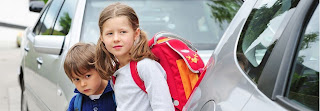Launching the guidance, Stephen Hammond in a written statement to the house said that the new guidance “incorporates recent changes that create more flexibility for authorities to implement 20mph limits and zones.”
The guidance recognises the benefits of 20 mph limits quoting a 5% reduction in accident rates for each 1 mph reduction in average speed. This accords well with a study from Hull which saw a 64% reduction in accident rates measured over the 3 years since implementation.
The new guidance encourages 20 mph limits in a number of ways :-
· It identifies as priority for action that “Traffic authorities are asked to keep their speed limits under review with changing circumstances, and to consider the introduction of more 20 mph limits and zones, over time, in urban areas and built-up village streets that are primarily residential, to ensure greater safety for pedestrians and cyclists, using the criteria in Section 6.” (para 12)
· It recognises the importance of the “composition of road users (including existing and potential levels of vulnerable road users)” as a key factor that needs to be taken into account. (para 30)
· It recognises that “Fear of traffic can affect peoples’ quality of life and the needs of vulnerable road users must be fully taken into account in order to further encourage these modes of travel and improve their safety. Speed management strategies should seek to protect local community life.” (para 32). This para is particularly significant for Stoke Golding.
The guidance comes with an appraisal tool for measuring the benefits of 20 mph implementations in different circumstances. I understand the tool considers both accident and quality of life factors. I will be trying to get my head around this shortly. However I suspect we will not have all the data to run the model ourselves.
The circular also contains guidance on setting speed limits on rural roads which has significance for roads like Wykin Lane and Stoke Road.
The circular also contains guidance on setting speed limits on rural roads which has significance for roads like Wykin Lane and Stoke Road.
So this looks like great news for rural communities. Lets see how Leicestershire County Council respond.
You can see the full document here https://www.gov.uk/government/




